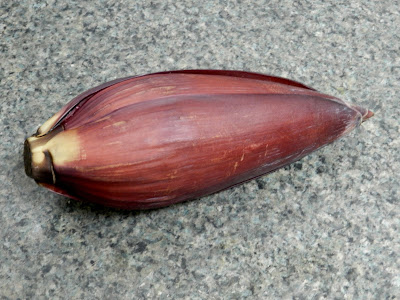During 2011, twice each month, on the first day and the fifteenth, I posted about what had happened at the restaurant since the previous post. The whole series gives a picture of a year in the restaurant business. This is the index to the series.
2011 was a crazy year that saw three of the worst months in our history and five of our best months ever. It started horribly in January and ended with a horrible December that saw no holiday parties and very sparse bookings for New Year's Eve. But on balance, 2011 finished up about fifteen percent from 2010 and the improved cashflow let me perform long-delayed renovations.
Given the roller coaster ride in 2011, I have no idea what to expect in 2012 as we start our tenth year at this location, except for more of the same.
JanuaryJanuary 1: New Year's Eve redux, trying to close the 2010 books
January 15: First snow of 2011, 2010 books closed, root vegetable tasting, new lunch menu, Valentine's menu planning, IRS woes, head line cook leaving
FebruaryFebruary 1: January worst month ever, escalating shrimp prices, Valentine's menu set, new cooking classes set, searching for new line cook, wine dinner canceled
February 15: Valentine's redux—"brutal," chef's tastings, cooking classes, staging line cook candidates, seafood vendor goes out of business
MarchMarch 1: First local green veg of 2011, new lunch menu published, dining room renovation starts
March 15: Cooking classes start, new table top purchases, new table linens, dining room reconfiguration, South African wine dinner
AprilApril 1: April Fool's menu, taxes and more taxes, more renovation, tasting dinners
April 15: Food show, new chocolate, new menu covers, first morels, cooking classes end, new chairs arrive, new divider built, anticipating our annual vacation
MayMay 1: Spring rains, asparagus and morels, dining room painting commences, Apple Blossom Festival, annual holiday
May 15: Recovering from annual vacation, prom/graduation/Mother's Day trifecta, deck opens, asparagus!, dining room painted
JuneJune 1: Rain, rain, rain!; busy-busy pre-Memorial Day; softshell crabs, English peas, strawberries; French class visits; Glen Manor Vineyards wine dinner; hypercaffeination; phone scams
June 15: Softshell crabs and asparagus are done, cherries arrive, dining room ceiling painted, wine list renovation, public demonstrations, planning for Linden wine dinner
JulyJuly 1: June a fantastic sales month, produce company imposes minimum order, why dishes sell—or don't, Linden dinner redux, holes in the dining room walls, planning for garlic dinner, summer vegetables arrive in the market
July 15: Corkage fees and etiquette, lunch just dies, the health inspector visits, it is pickling season, peaches and corn arrive, local rabbits and lambs, electrical wiring
AugustAugust 1: 100-degree forecast as bad as a blizzard forecast, it is hot in the kitchen, garlic dinner redux, shell beans arrive in the market, squash crop fails, tomatoes arrive, we respond by making fresh mozzarella daily, tweaking the menu
August 15: Business is on a roll, bad year for tomatoes, battles with the City, the dining room makeover is completely finished, Budweiser gets thrown out
SeptemberSeptember 1: Hurricanes and earthquakes, oh my!; annual Harvest Dinner redux; telephone data line woes; new coffee cups; public demo in hurricane rains
September 15: Leaves are falling on the deck, deluges of rain kill business and the grape harvest, Duck Dinner, new local beef turns out tough, more rabbits, first cassoulet of the year, ceiling collapse in the newly renovated dining room
OctoberOctober 1: Trees are starting to turn color, we get snubbed at Taste of the Town, drastic lunch menu changes, cool weather halts seafood sales, preventative maintenance, bar renovation commences, butterflies and hummingbirds stop in during migration, working in the dark, possible meals tax increase, Barrel 27 wine dinner
October 15: Crazy busy during leaf season, Around the World in 8 Courses, Balloon Festival weekend, another ceiling collapse, rude customers, hurry up and bake cheesecakes, exhaustion
NovemberNovember 1: Accademia di Cucina Italiana dinner; Quickbooks woes; short of table linens; overcooked risotto; sheer exhaustion; snap frost; celery root, collards, sweet potatoes and daikon appear at the market; dishwasher woes; hatchet job review; snow is forecast and really happens!
November 15: Business falls off a cliff, negative cashflow, new sculptures for the walls, wine list renovation, lots of chef's tastings, dishwasher woes get worse
DecemberDecember 1: Thanksgiving week redux, open or closed for Christmas Eve?, chef's tastings, dishwasher is fired, bar renovation is complete save for delivery of bar stools, unemployment hearing for fired dishwasher
December 15: Business is awful, no holiday parties this year, starting to close 2011, fired dishwasher denied unemployment, scramble to publish New Year's Eve menu, bar stools delivered and bar is reopened, line cook resigns, prep cook promoted, photoshoot, planning for staff Christmas party
 Cutting open the Buddha's hand, the center is all pith, but the pith is more sweet than bitter, and perfectly edible raw or cooked—the cooked pieces that we infused in cream and strained out are delicious lemon candies. The rind has a bitter aftertaste to it that a standard lemon does not. The fragrance is more at Meyer lemon than standard lemon and the flavor is lemony with a haunting note of lemongrass.
Cutting open the Buddha's hand, the center is all pith, but the pith is more sweet than bitter, and perfectly edible raw or cooked—the cooked pieces that we infused in cream and strained out are delicious lemon candies. The rind has a bitter aftertaste to it that a standard lemon does not. The fragrance is more at Meyer lemon than standard lemon and the flavor is lemony with a haunting note of lemongrass.




























